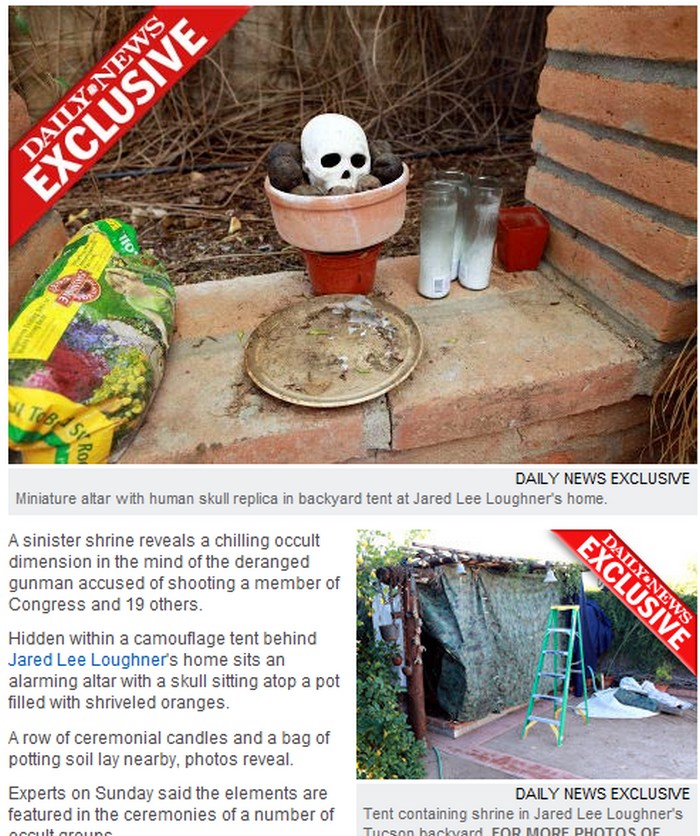by James Buchanan
Some Jews have been attempting to deny the fact that the Arizona shooter Jared Loughner is Jewish. Loughner’s Myspace page was speedily removed from the Internet and an iron curtain was quickly going up around any personal information about Loughner’s ethnicity.
Note that the bizarre shrine pictured in the Loughners’ backyard came from the NY Daily News. It isn’t Internet gossip or rumors. Note that oranges in the shrine are shriveled. The feast of Sukkot is in September or October and the harvest of fruit is a big part of it. I suspect that rather than construct an elaborate booth in their backyard each year for this ritual, some Jews simply keep the same shrine and booth in their backyard.
This strongly, strongly indicates that the Loughner family are not only Jews, they are practicing Jews carrying out the cultural rituals of Judaism. This additional evidence supports the earlier statement by Jared Loughner’s friend, Bryce Tierny that Jared’s mother is Jewish.
The skull in the middle of the Sukkot shrine is almost certainly a Halloween decoration that the deranged Jared put on top of the shrine as a sort of sick joke.
The NY Daily News reports “A sinister shrine reveals a chilling occult dimension in the mind of the deranged gunman accused of shooting a member of Congress and 19 others. Hidden within a camouflage tent behind Jared Lee Loughner’s home sits an alarming altar with a skull sitting atop a pot filled with shriveled oranges. A row of ceremonial candles and a bag of potting soil lay nearby, photos reveal.”
The Jewish ritual of Sukkot is described as follows: Sukkot (Hebrew: סוכות or סֻכּוֹת, sukkōt, Feast of Booths, Feast of Tabernacles) is a Biblical holiday celebrated on the 15th day of the month of Tishrei (late September to late October). It is one of the three Biblically mandated Shalosh regalim on which Jews and Believers make pilgrimages to pre-determined sites to worship and fellowship Temple in Jerusalem. The Holy Day lasts seven days, including Chol Hamoed and is immediately followed by another festive day known as Shemini Atzeret/The Last Great Day. The Hebrew word sukkōt is the plural of sukkah, “booth or tabernacle”, which is a walled structure covered with flora, such as tree branches or bamboo shoots. The sukkah is intended as a reminiscence of the type of fragile dwellings in which the ancient Israelites dwelt during their 40 years of wandering in the desert after the Exodus from Egypt. Throughout the holiday the sukkah becomes the primary living area of one’s home. All meals are eaten inside the sukkah and many sleep there as well. On each day of the holiday, members of the household recite a blessing over the lulav and etrog, or Four species.[1] According to Zechariah, in the messianic era Sukkot will become a universal festival and all nations will make pilgrimages annually to Jerusalem to celebrate the feast there.[2] …..It (Sukkot) was a thanksgiving for the fruit harvest. Coming as it did at the completion of the harvest, Sukkot was regarded as a general thanksgiving for the bounty of nature in the year that had passed.”
